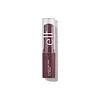What's inside
What's inside
 Key Ingredients
Key Ingredients

 Benefits
Benefits

 Concerns
Concerns

 Ingredients Side-by-side
Ingredients Side-by-side

Triisostearyl Citrate
EmollientHydrogenated Polyisobutene
EmollientButyrospermum Parkii Butter
Skin ConditioningMicrocrystalline Wax
Emulsion StabilisingPunica Granatum Sterols
Skin ConditioningOctyldodecanol
EmollientPolyethylene
AbrasiveDisteardimonium Hectorite
StabilisingRicinus Communis Seed Oil
MaskingCocos Nucifera Oil
MaskingAloe Barbadensis Leaf Extract
EmollientPersea Gratissima Oil
Skin ConditioningPhytosterols
Skin ConditioningLinolenic Acid
CleansingLinoleic Acid
CleansingHydrogenated Castor Oil
EmollientLauryl PCA
HumectantSodium Hyaluronate
HumectantCaprylyl Glycol
EmollientOleic Acid
EmollientLecithin
EmollientHexylene Glycol
EmulsifyingPhenoxyethanol
PreservativeTetrahexyldecyl Ascorbate
AntioxidantTocopheryl Acetate
AntioxidantMica
Cosmetic ColorantCI 77891
Cosmetic ColorantCI 77491
Cosmetic ColorantCI 77492
Cosmetic ColorantCI 77499
Cosmetic ColorantCI 77163
Cosmetic ColorantCI 42090
Cosmetic ColorantCI 75470
Cosmetic ColorantCI 15850
Cosmetic ColorantCI 45380
Cosmetic ColorantCI 45410
Cosmetic ColorantCI 73360
Cosmetic ColorantCI 17200
Cosmetic ColorantCI 19140
Cosmetic ColorantCI 15985
Cosmetic ColorantTriisostearyl Citrate, Hydrogenated Polyisobutene, Butyrospermum Parkii Butter, Microcrystalline Wax, Punica Granatum Sterols, Octyldodecanol, Polyethylene, Disteardimonium Hectorite, Ricinus Communis Seed Oil, Cocos Nucifera Oil, Aloe Barbadensis Leaf Extract, Persea Gratissima Oil, Phytosterols, Linolenic Acid, Linoleic Acid, Hydrogenated Castor Oil, Lauryl PCA, Sodium Hyaluronate, Caprylyl Glycol, Oleic Acid, Lecithin, Hexylene Glycol, Phenoxyethanol, Tetrahexyldecyl Ascorbate, Tocopheryl Acetate, Mica, CI 77891, CI 77491, CI 77492, CI 77499, CI 77163, CI 42090, CI 75470, CI 15850, CI 45380, CI 45410, CI 73360, CI 17200, CI 19140, CI 15985
Diisostearyl Malate
EmollientBis-Diglyceryl Polyacyladipate-2
EmollientPhytosteryl/Isostearyl/Cetyl/Stearyl/Behenyl Dimer Dilinoleate
Skin ConditioningOctyldodecanol
EmollientPolyisobutene
Polyethylene
AbrasivePentaerythrityl Tetraisostearate
EmollientNeopentyl Glycol Diethylhexanoate
EmollientIsotridecyl Isononanoate
EmollientMicrocrystalline Wax
Emulsion StabilisingPentaerythrityl Adipate/Caprate/Caprylate/Heptanoate
EmollientIsostearic Acid
CleansingDibutyl Lauroyl Glutamide
Skin ConditioningParfum
MaskingDibutyl Ethylhexanoyl Glutamide
Skin ConditioningCaprylyl Glycol
EmollientTocopheryl Acetate
AntioxidantEthylhexylglycerin
Skin ConditioningHexyl Cinnamal
PerfumingAluminum Hydroxide
EmollientTriethoxycaprylylsilane
Linalool
PerfumingDiisostearyl Malate, Bis-Diglyceryl Polyacyladipate-2, Phytosteryl/Isostearyl/Cetyl/Stearyl/Behenyl Dimer Dilinoleate, Octyldodecanol, Polyisobutene, Polyethylene, Pentaerythrityl Tetraisostearate, Neopentyl Glycol Diethylhexanoate, Isotridecyl Isononanoate, Microcrystalline Wax, Pentaerythrityl Adipate/Caprate/Caprylate/Heptanoate, Isostearic Acid, Dibutyl Lauroyl Glutamide, Parfum, Dibutyl Ethylhexanoyl Glutamide, Caprylyl Glycol, Tocopheryl Acetate, Ethylhexylglycerin, Hexyl Cinnamal, Aluminum Hydroxide, Triethoxycaprylylsilane, Linalool
 Reviews
Reviews

Ingredients Explained
These ingredients are found in both products.
Ingredients higher up in an ingredient list are typically present in a larger amount.
Caprylyl Glycol is a humectant and emollient, meaning it attracts and preserves moisture.
It is a common ingredient in many products, especially those designed to hydrate skin. The primary benefits are retaining moisture, skin softening, and promoting a healthy skin barrier.
Though Caprylyl Glycol is an alcohol derived from fatty acids, it is not the kind that can dry out skin.
This ingredient is also used as a preservative to extend the life of products. It has slight antimicrobial properties.
Learn more about Caprylyl GlycolMicrocrystalline Wax is created by de-oiling petroleum. It is highly refined and purified before being added to cosmetics.
Microcrystalline Wax is used to enhance the texture and create even consistency. It helps stabilize a product by preventing ingredients from separating.
Octyldodecanol is a fatty alcohol. It is primarily used to enhance the texture of products.
As an emulsifier, Octyldodecanol helps prevent the oils and waters from separating. It also prevents ingredients from creating foam when shaken.
Octyldodecanol is created by reducing fatty acid to an alcohol.
Due to its high molecular weight, it does not get absorbed into the skin.
Learn more about OctyldodecanolPolyethylene is a synthetic ingredient that helps the skin retain moisture. It is a polymer.
It is also typically used within product formulations to help bind solid ingredients together and thicken oil-based ingredients. When added to balms and emulsions, it helps increase the melting point temperature.
Tocopheryl Acetate is AKA Vitamin E. It is an antioxidant and protects your skin from free radicals. Free radicals damage the skin by breaking down collagen.
One study found using Tocopheryl Acetate with Vitamin C decreased the number of sunburned cells.
Tocopheryl Acetate is commonly found in both skincare and dietary supplements.
Learn more about Tocopheryl Acetate